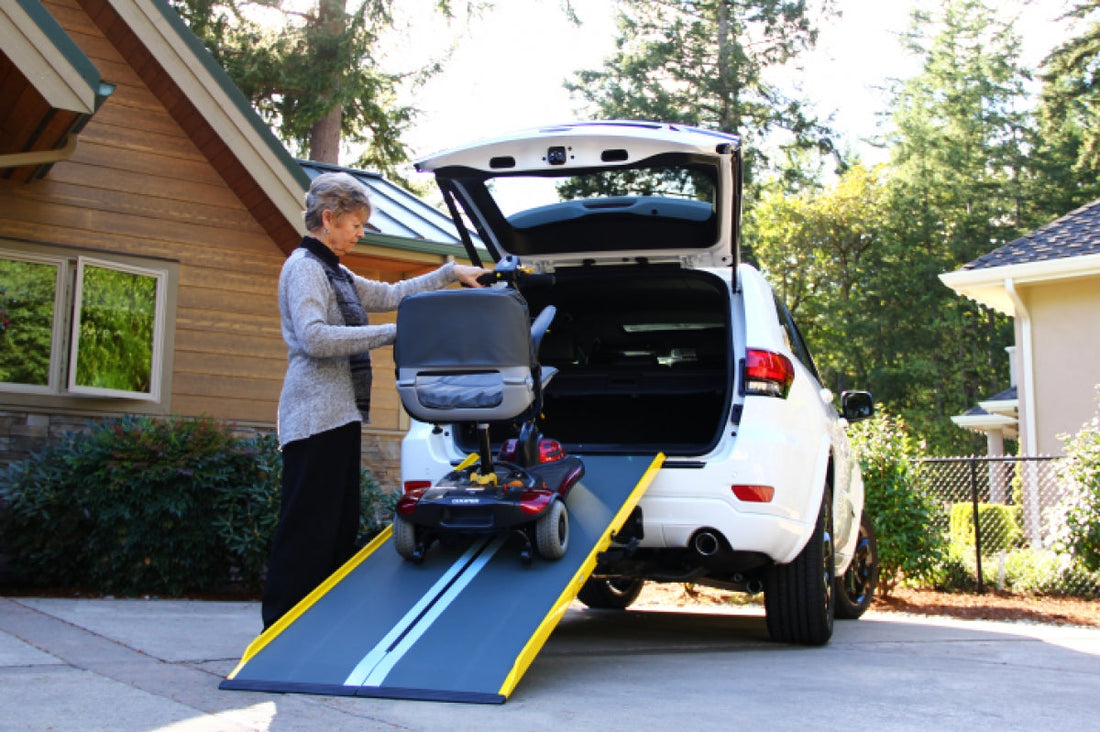If you’ve been following the mobility industry lately, you’ve probably noticed just how quickly technology is evolving. From foldaway mobility scooters to AI-powered wheelchairs, today’s innovations are redefining what independence and accessibility look like.
In this guide, we’ll walk through the top mobility tech trends shaping 2025, highlight what they mean for users, and help you decide which features could best improve your comfort, safety, and freedom.
Smart Wheelchairs with AI Integration
Artificial intelligence is no longer just for smartphones—it’s making wheelchairs smarter and more intuitive. AI-enabled power chairs can now learn your preferred driving patterns, automatically adjust for terrain, and even help avoid obstacles in real time.
Some models integrate with navigation systems, allowing users to plan routes with accessible pathways or voice-command destinations. These features are especially beneficial for urban environments, where safe navigation and quick adjustments are essential.

Lightweight and Foldable Designs
Mobility aids are becoming easier to transport than ever before. Lightweight folding mobility scooters and lightweight collapsible mobility scooters are especially popular among users who travel frequently or have limited storage space.
Advancements in aerospace-grade aluminum and carbon fiber materials allow for ultra-lightweight electric wheelchair frames without sacrificing durability. This portability trend empowers users to maintain an active lifestyle without worrying about bulk or heavy lifting.

Advanced Battery Life and Charging Solutions
Battery technology is seeing a major upgrade in 2025. Extended-range lithium-ion batteries now power many of the latest mobility aids, delivering all-day use on a single charge. Some models can travel over 25 miles before needing to recharge, making them perfect for outdoor adventures or long commutes.
Fast-charging capabilities and swappable battery packs are also gaining traction—meaning less downtime and more time enjoying mobility freedom.
Voice-Activated Controls and Assistants
Voice assistants like Alexa, Siri, and Google Assistant are moving from the home into mobility devices. Many new power wheelchairs and scooters now feature built-in voice control for speed adjustment, horn activation, and even headlight operation.
For users with limited hand function, these features provide a hands-free way to operate essential controls, improving both convenience and independence.

Improved Suspension and Terrain Adaptability
Modern mobility aids are expanding their reach beyond smooth indoor floors. 2025’s models feature upgraded suspension systems and all-terrain wheels, allowing users to travel comfortably over gravel, grass, and uneven pavement.
This improved adaptability is especially beneficial for those who enjoy outdoor activities or live in areas with challenging weather and road conditions.
Wearable Mobility Devices and Exoskeletons
One of the most exciting frontiers in mobility technology is the rise of wearable devices. Lightweight powered exoskeletons can now assist with walking, standing, and even stair navigation for individuals with partial mobility loss.
While still more common in rehabilitation centers, these devices are steadily moving toward mainstream consumer availability as prices become more competitive.
Enhanced Safety Features and Sensors
Safety technology is becoming more advanced and proactive. New sensor systems can detect inclines, drops, and obstacles, automatically slowing or stopping the device to prevent accidents.
Some models now feature blind-spot monitoring, collision avoidance, and automatic braking—features once found only in luxury cars, now protecting mobility device users.

Customizable and Modular Accessories
Personalization is a key theme for 2025. Many power wheelchair and scooter models now offer modular designs that let users add or swap accessories—cup holders, oxygen tank mounts, USB chargers, storage pouches, and more—without needing special tools.
This flexibility allows mobility devices to adapt alongside changing needs over time, making them a smarter long-term investment.
Integration with Mobile Apps and IoT
Mobility devices are increasingly connected to smartphones and cloud-based platforms. Through mobile apps, users can now track battery life, lock or unlock their devices remotely, and even schedule maintenance alerts.
IoT integration also allows for real-time GPS tracking, which can be useful for caregivers and family members who want to ensure safety and location awareness.
Future Outlook: What’s Next in Mobility Tech?
Looking ahead, the pace of innovation shows no signs of slowing. Expect to see:
-
Wider adoption of solar-assisted charging panels
-
Fully autonomous wheelchairs for specific environments
-
Smarter, lighter exoskeletons for home and community use
-
Even more compact foldaway mobility scooters for air travel
As these technologies mature, they’ll continue breaking down barriers and expanding what’s possible for individuals with mobility challenges.

Ready to Explore the Latest in Mobility Tech?
At All Star Wheelchairs, we offer some of the most advanced power wheelchairs and lightweight folding mobility scooters on the market—backed by U.S.-based support, fast shipping, and real customer reviews. Whether you’re interested in cutting-edge AI features or simple, lightweight portability, we’re here to help you find the perfect fit.
Call us at (669) 267-5655
Email: support@allstarwheelchairs.com

